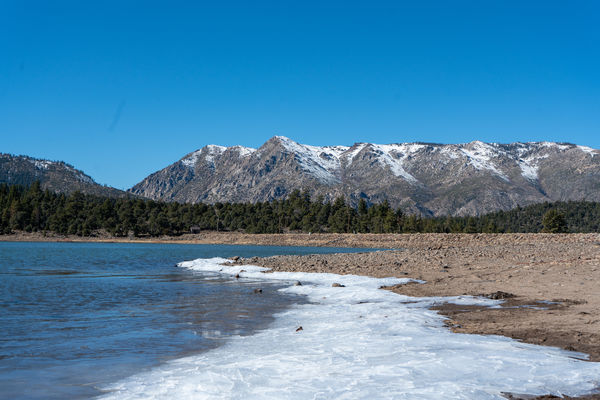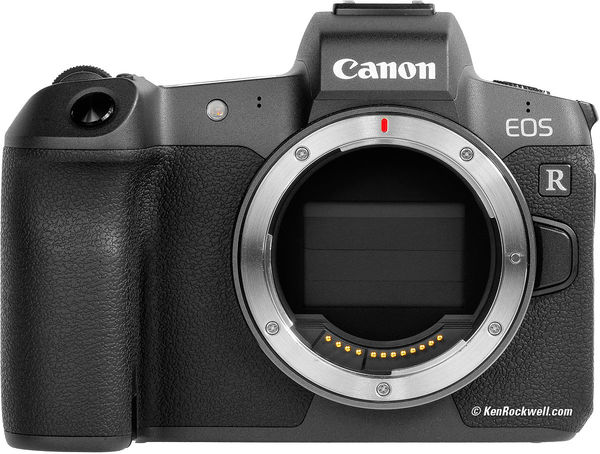Losing faith in mirrorless cameras
Feb 9, 2020 19:38:47 #
In the attached image you can see what appears to be lint in the image in the upper left portion in the sky. I've been mirrorless cameras for over a year now and have noticed that the sensor is very hard to keep clean. I preformed a test using 2 mirrorless cameras and 2 cameras with mirrors. The camera specs were very similar, full frame with the same native resolutions. Each camera used a 300mm telephoto lens. Each camera was set up with aperture priority and an ISO of 400. The dust became noticeable at f-stops f16 and smaller on the mirrorless camera (f-16 thru f-32). The smaller the stop the more noticeable. The mirrored camera were free of any noticeable aberrations. Each lens was cleaned prior to the testing. The mirrorless camera sensors were cleaned according to the manufacturer instructions and then manually cleaned. All the cleaning did was move the aberrations around or even create new ones. Does the mirror protect the sensor in cameras with mirrors? Does the sensor in mirrorless cameras attract dust because of an electrical charge? Has anybody else noticed this issue on their mirrorless cameras? It is usually most noticeable in clear blue sky like the attachment.

Feb 9, 2020 19:49:21 #
Other people have reported sensors gathering debris on mirrorless cameras.
However that has not been my experience. I have been shooting mirrorless since circa 2008-2009 and my experience is mirrorless sensors need much much less cleaning than my DSLR sensors. There is no mirror flipping around stirring up the air and flinging oil everywhere. However the sensor is more exposed when changing lenses. So perhaps it's more important to change lenses in a quiet dust free environment on a mirrorless camera.
However that has not been my experience. I have been shooting mirrorless since circa 2008-2009 and my experience is mirrorless sensors need much much less cleaning than my DSLR sensors. There is no mirror flipping around stirring up the air and flinging oil everywhere. However the sensor is more exposed when changing lenses. So perhaps it's more important to change lenses in a quiet dust free environment on a mirrorless camera.
Feb 9, 2020 19:54:10 #
Whichever you shoot, I wouldn’t go to f16 (and certainly not beyond) due to diffraction if you care about sharpness.
Feb 9, 2020 20:06:34 #
I understand the problem occurs the further down a lens is stopped down settings on a mirrorless camera. I have been very careful to keep the camera body turned down and covering the lens mount on a lens off the camera.
I am using a Panasonic Lumix GX85 which is similar to a rangefinder camera of old on steroids. I liked the camera so much, I bought a second body so one is fitted with the 45-150 and the other the 12-24 kit lenses and I no longer change lenses.
That does not mean that I hung up my DSLR Nikons, but they are seeing less use than before I bought the GX85 system.
My camera dealer tells they can clean the sensors on the GX85's for about $90.00 which would be my option over cleaning them myself.
I am using a Panasonic Lumix GX85 which is similar to a rangefinder camera of old on steroids. I liked the camera so much, I bought a second body so one is fitted with the 45-150 and the other the 12-24 kit lenses and I no longer change lenses.
That does not mean that I hung up my DSLR Nikons, but they are seeing less use than before I bought the GX85 system.
My camera dealer tells they can clean the sensors on the GX85's for about $90.00 which would be my option over cleaning them myself.
Feb 9, 2020 20:15:43 #
skyspy wrote:
In the attached image you can see what appears to ... (show quote)
Keep your rear lens cap clean. It makes a big difference.
Feb 9, 2020 20:20:54 #
I have 3 mirrorless cameras and the only problem I have had (knocking, maybe pounding on wood) is a little dust on my G9 that vanished with a few puffs from the Rocket blower. In another discussion on DPreview I learned that Canon automatically has the shutter closed if the lens is off but the rest of the brands don't. The theory broached was that other manufacturers left the shutter open b/c it is delicate and any damage would be a bigger problem than cleaning a sensor. Wish you luck with the dust!
Feb 9, 2020 20:23:31 #
I am not very experienced, by the way, but what I see in your photo looks more like a smear of something rather than specs of dust.
Feb 9, 2020 21:32:08 #
aikiboy wrote:
I am not very experienced, by the way, but what I see in your photo looks more like a smear of something rather than specs of dust.
I was thinking the same thing.
Jason
Feb 9, 2020 22:08:35 #
I'm very careful changing lens. Never out in the environment. Usually in the car and protecting both the lens and sensor from exposure. I thought my sensor was clean as well, until shooting long telephoto. Wide angle, normal lens and portrait telephoto 85mm don't present the artifact. I can take a clean pic with a normal lens and immediately change to a tekephoto and see the artifacts. Like I mentioneed the artifact begins coming noticeable at f16. The attached pick was shoot at f8 and the artifacts are just visible. It is just a matter of time before a sensor needs cleaning, but it shouldn't be very difficult to do.
Feb 9, 2020 23:13:59 #
skyspy wrote:
In the attached image you can see what appears to ... (show quote)
I have had my EOS R for just over a year and dust on the sensor is not a problem. Unlike other mirrorless interchangable lens cameras, including the EOS RP, when the R is shut off the shutter closes and seals the interior of the camera from dust and debris. This photo from Ken Rockwell's site shows it.
Feb 9, 2020 23:38:16 #
One can sooner stop the sun from rising than deny the arrival of mirrorless cameras.
Feb 10, 2020 00:21:36 #
I think it is just a matter of random chance. If you have two camera identical camera bodies, one will have more dust than the other. Each has a 50% chance of being the villain.
I switched from Nikon to Fuji. Each has dust spots but not very often. Neither could sensibly be called superior to the other in that regard.
I switched from Nikon to Fuji. Each has dust spots but not very often. Neither could sensibly be called superior to the other in that regard.
Feb 10, 2020 01:08:32 #
I have been shooting mirrorless since circa 2009 and DSLR since about 2011. I take reference pics and I watch for sensor goobers. My experiences are that mirrorless requires less sensor cleaning. A lot less. My DSLRs require cleaning every 6m or a year at best. My mirrorless sensors have gone much longer. In fact I can’t remember having to clean a mirrorless sensor. And I watch for Goobers and I take reference pics. If they are there I will see them.
When changing lenses I obey good lens changing hygiene. And “cleaning at startup/shutdown” (all available options) is turned on.
My suspicion is that lens changing hygiene plays a bigger role with mirrorless tech than with DSLR tech. Given good lens changing hygiene a DSLR will spot up in 6m to a year. Given that same hygiene a mirrorless sensor will not spot up.
That’s my 2 cents and I back it up with years of experience. It works for me. YMMV.
When changing lenses I obey good lens changing hygiene. And “cleaning at startup/shutdown” (all available options) is turned on.
My suspicion is that lens changing hygiene plays a bigger role with mirrorless tech than with DSLR tech. Given good lens changing hygiene a DSLR will spot up in 6m to a year. Given that same hygiene a mirrorless sensor will not spot up.
That’s my 2 cents and I back it up with years of experience. It works for me. YMMV.
Feb 10, 2020 01:39:08 #
Do you remove your lens after every shoot or leave it on the camera? I'm constantly changing lens and usually store the camera detached from the lens. I follow good practice when changing the lens: clean the body of the camera before removing the lens. Clean body and rear lens cap before attaching and never remove the lens unless in the proper environment. But no matter how careful you are, the sensor will evenually need cleaning. My problem is that I believe I'm just moving the goobers around when using a blower instead of removing them from the body. That is why I'm wondering if the sensor has an electrostatic charge that keeps attracting the dust. I live in a very dry desert environment, about 17% humidity. Maybe I'm overreacting. The manufacturer instructs to use f11 when checking for artifacts. I usually start seeing issues at f16 when testing. I usually shoot around f8 in full manual mode. But the attached pic was shoot at f8. Everytime I try to clean the sensor, it seems to just change the pattern I see.
Feb 10, 2020 01:44:22 #
skyspy wrote:
Do you remove your lens after every shoot or leave... (show quote)
Who are you asking the question of?
Myself, I only swap lenses when necessary. It is not necessary to swap lenses for me to put the camera in the drawer. So my answer is I leave the lens on the camera.
17% humidity is low. Static electricity will definitely play a role at that humidity level. Have you considered adding a humidifier to your lens cleaning & changing area? 30-70% is a good range for humidity.
If you want to reply, then register here. Registration is free and your account is created instantly, so you can post right away.






